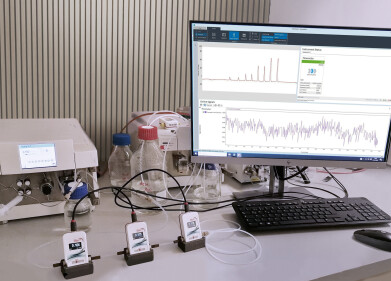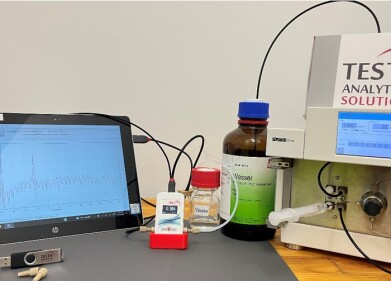Liquid Chromatography
Can Fortified Eggs Prevent Blindness? — Chromatography Explores
Dec 22 2017
‘Make sure you get your vitamins’ is a call heard from mothers all over the world. And it is a call that we should all heed. Not getting our vitamins can lead to all sorts of health problems. Scurvy, fatigue, weight loss and death. All can be caused by a lack of vitamins. Sometimes even eating the right foods cannot prevent vitamin deficiency. Because the processing and cooking can destroy the vitamin content of certain foods.
How to combat these losses is a subject addressed in a recent paper published in the journal ACS Omega — Retention of Carotenoids in Biofortified Maize Flour and β‑Cryptoxanthin-Enhanced Eggs after Household Cooking. The results could be important in helping people in areas of the world where vitamin A deficiency leads to high levels of blindness.
Retinol — a key micronutrient
The World Health Organization (WHO) states that vitamin A deficiency is the leading cause of preventable blindness in children. It also increases the risk of disease and death from infections, and in pregnant women can increase the risk of maternal mortality. It is listed as a public health problem in half of all countries, particularly in South East Asia and Africa.
To combat the deficiency of vitamin A, WHO is targeting both short-term and long-term strategies. In the short-term, the use of vitamin A supplements and encouraging women to breastfeed will help alleviate the problem in babies and toddlers. While in the long-term, encouraging a diet of foods high in vitamin A alongside food-fortification is thought to be the best way to target high-risk groups in the target areas.
Fortified food — improving health
Fortification of foods happens all over the world — many breakfast cereals in the UK are fortified with folic acid for example. Fortification if simply the addition of a micronutrient — such as folic acid or vitamin A — to a staple food to increase the access to the nutrient. WHO consider fortification to be a cost-effective method of reducing vitamin A deficiencies, especially where it is not possible to improve people’s diet through other means.
But what happens when these fortified foods are processed — are the benefits lost? Surprisingly, there has not been too much research carried out on this topic, which is part of the reason why the team from Mexico and the US looked at the issue. They focussed on eggs and corn flour that had been fortified with carotenoids — a precursor of vitamin A — and made porridge and cakes to see the effects of processing the foods on fortified nutrient levels.
The foods were evaluated using high performance liquid chromatography — a technique discussed in the article, Enhanced Peptide Identification Using Capillary UHPLC and Orbitrap Mass Spectrometry — and the team found that not all preparation methods are equal. Boiled porridge kept its carotenoids the best, while deep-fried cornmeal puffs lost the highest percentage of carotenoids. And while hard-boiled eggs were ok, scrambled eggs lost carotenoids.
Events
Jan 20 2025 Amsterdam, Netherlands
Feb 03 2025 Dubai, UAE
Feb 05 2025 Guangzhou, China
Mar 01 2025 Boston, MA, USA
Mar 04 2025 Berlin, Germany













